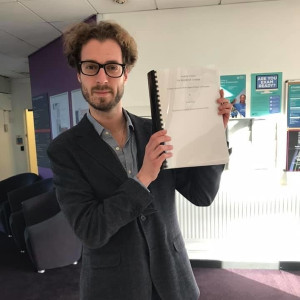Non-fiction and media texts always form a part of the GCSE English Language exam and it is imperative that you have a general understanding of how to approach these types of texts.
Analyzing non-fiction and media texts is a crucial skill in understanding the world around us. Here are some fundamentals to consider when analyzing non-fiction and media texts:
- Purpose and Audience: Consider the purpose and audience of the text. Identify the main argument or message, and evaluate how the text appeals to its intended audience.
- Tone and Style: Analyze the tone and style of the text. Consider whether the text is formal or informal, persuasive or informative. Look for any use of language techniques such as irony, sarcasm, or humour.
- Language and Vocabulary: Analyze the language and vocabulary used in the text. Consider the connotations of specific words and phrases, and identify any specialist vocabulary or jargon.
- Structure and Organization: Analyze the structure and organization of the text. Consider the use of headings, subheadings, and bullet points. Look for any patterns or sequences in the text.
- Visual Elements: Consider any visual elements in the text, such as images, graphs, or charts. Analyze how these elements support or enhance the text's message.
- Bias and Perspective: Consider any bias or perspective in the text. Identify the writer's viewpoint and evaluate how it influences the text's content and message.
- Context: Consider the context in which the text was produced. Analyze how the text reflects the cultural, social, and historical context of the time.
- Relevance and Significance: Evaluate the relevance and significance of the text. Consider its impact on the audience and society, and whether it is effective in achieving its purpose.

Analyzing Text by Thinking about the GAP
First of all, let us mind the GAP!!
Genre
Audience
Purpose
Genre
What is the type of text?
In the exam, this will be obvious as you are usually told where the text comes from e.g. a newspaper, a magazine, a website, a book etc. Knowing where the document comes from will help you to think about the intended audience.
Audience
Who is the text aimed at? What audience did the writer have in mind? Remember different styles of writing will be used for different audiences. Consider the way you talk to your teacher as compared to how you would talk to your friends.
Purpose
What does the text want you to do?
Remember that all documents have a purpose - some entertain, some inform, some persuade, some argue etc. The text will always have a specific purpose, there may also be more than one purpose. In order to maximise your grades, you should mention all the possible purposes of the text!
Now to get deeper into our analysis, let us make a LIST!!
Language
Information
Style
Tone
Language
Is the language persuasive, informative, or descriptive? Is the language more suited towards adults or children- make sure you have evidence to support your conclusions. Is the language emotive? Does it make you feel angry, happy or sad? Alternatively, does the writer use informative language? (which is the language that conveys facts). Or is there a mixture of emotive and informative language? Does the writer use a direct address? To reach those high marks you have to understand why specific words/phrases are used!
Information
Is the information in the text factual, opinion or a mixture of both? You would need to identify this. For example, you could talk about how the writer’s opinion seeks to persuade the reader into thinking the same way as them. In order to help understand the writer's opinion, you can look at the title of the text, the conclusion and what type of factual information is presented.
Style
How is the text presented e.g. are there pictures used, are the words long or short, is the text written in bullet points or short paragraphs, are colours used to make it eye-catching? These are all similar to presentation devices (sub-headings, headings etc). You would need to consider the effect of the style on the writer’s intended audience e.g.if there are colours and pictures used, the writer may be seeking to appeal to a younger audience.
Tone
The tone is linked to language and can be defined as the attitude of the writer towards the subject in the text. In the exam you would need to comment on the tone of the text, is it sad, funny, angry etc. What evidence supports your conclusion e.g. has the writer used ellipsis or bold print for emphasis or anger? Or has the writer used a lot of facts to help convey a serious tone? Or does the writer/ speaker use a passionate tone to persuade or to show you how strongly they feel about the topic?
A little task for you to try……
Consider looking at a couple of the non-fiction texts written below. Try using the GAP approach to understand the nature of the text. When you are comfortable with your understanding, go on to use the LIST approach to identify the specifics within the text:
- · Newspaper article
- · Magazine article
- · List of instructions
- · Dictionary definition
- · Advertisement
- · Blog column in a newspaper or magazine
Analyzing an Extract
Tasks in exams can ask you to analyze the effectiveness of a piece of writing, its themes and ideas, or how the writer uses language, structure, or a combination of these. To answer these tasks, you will need to consider:
- Explicit and implicit information in the text
- The language features the writer has used
- The structure of the text
- How it compares to other texts in terms of audience and purpose? You may also need to evaluate the text and assess how well it achieves its intended purpose.
To approach these tasks, it's best to start by identifying the key instructions in the question. Then, read the text and highlight three to four quotations that will support your answer. Finally, make a brief plan of the points you will include in your response.
Useful Resources
The following booklet contains a combination of information, mini-tasks and longer tasks to help students understand what is expected of them in the first section of the GCSE English language exam.
- GCSE Media and Non-fiction Texts (Mini booklet)
- GCSE Analyzing Non-fiction Revision Booklet
- GCSE Non-fiction Texts Reading Exemplars













Thank you, this really helped my child! He is now in Reading Boys!!!
😃